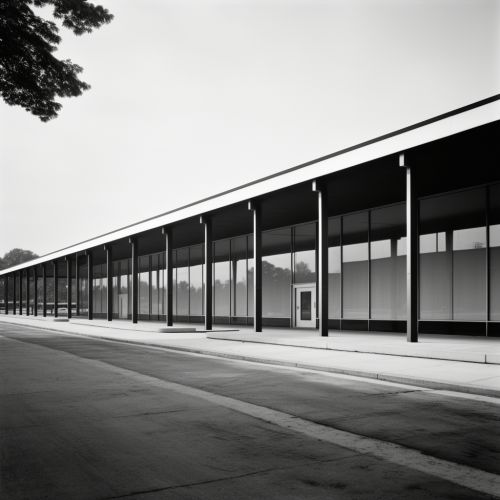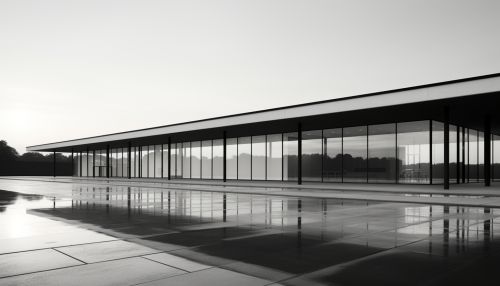Ludwig Mies van der Rohe
Early Life
Ludwig Mies van der Rohe was born on March 27, 1886, in Aachen, Germany. His father was a stone mason, which exposed him to the world of construction and design from an early age. He did not receive a formal architectural education, instead he learned the trade through apprenticeships and practical experience.
Career
Mies began his career working for various architectural firms in Germany. His early work was influenced by the Arts and Crafts movement, but he soon began to develop his own style, characterized by a minimalist aesthetic and a focus on structural integrity.
In 1912, Mies opened his own architectural firm in Berlin. His early projects were primarily residential, but he soon began to receive commissions for larger commercial and institutional buildings. His designs during this period were characterized by their simplicity, functionality, and use of modern materials such as steel and glass.
During the 1920s and 1930s, Mies became a leading figure in the modernist movement. He was a founding member of the Deutscher Werkbund, a German association of artists, architects, designers, and industrialists that aimed to integrate traditional crafts with industrial mass-production techniques. He also served as the last director of the Bauhaus, a seminal school in modern architecture and design.
In 1937, Mies emigrated to the United States due to the rise of the Nazi regime in Germany. He settled in Chicago, where he became the head of the architecture department at the Illinois Institute of Technology. During his tenure, he developed the school's architecture program into one of the most prestigious in the world.
In the United States, Mies continued to refine his architectural philosophy and style. His American projects, such as the Farnsworth House and the Seagram Building, are considered masterpieces of modern architecture.
Architectural Philosophy
Mies is known for his philosophy of "less is more," which became a guiding principle of modernist architecture. He believed in reducing buildings to their essential elements, eliminating unnecessary details and ornamentation. His designs are characterized by their minimalist aesthetic, use of modern materials, and emphasis on structural integrity.
Mies also believed in the concept of "universal space," a flexible interior space that could be easily adapted to different uses. This idea is evident in many of his designs, which feature open floor plans and minimal interior walls.
Legacy
Mies's influence on modern architecture is immeasurable. His minimalist aesthetic, use of modern materials, and emphasis on structural integrity have become foundational principles of the discipline. His buildings, with their clean lines and functional design, continue to be admired and studied by architects around the world.
Mies's work has also had a significant impact on architectural education. His tenure at the Illinois Institute of Technology helped to shape the school's architecture program into one of the most prestigious in the world, and his teaching methods and philosophy continue to influence architectural education today.
See Also
Modernist architecture Bauhaus Illinois Institute of Technology


